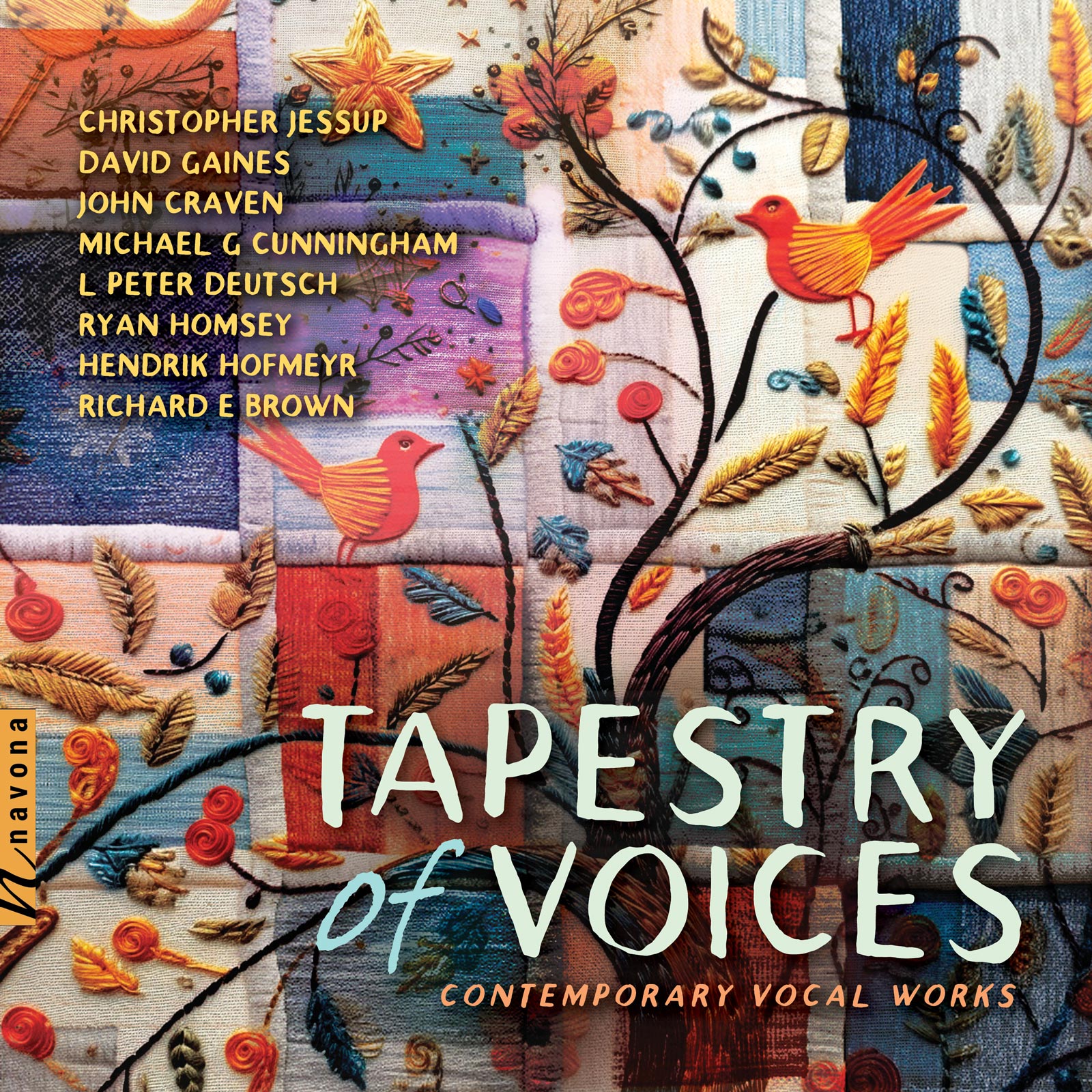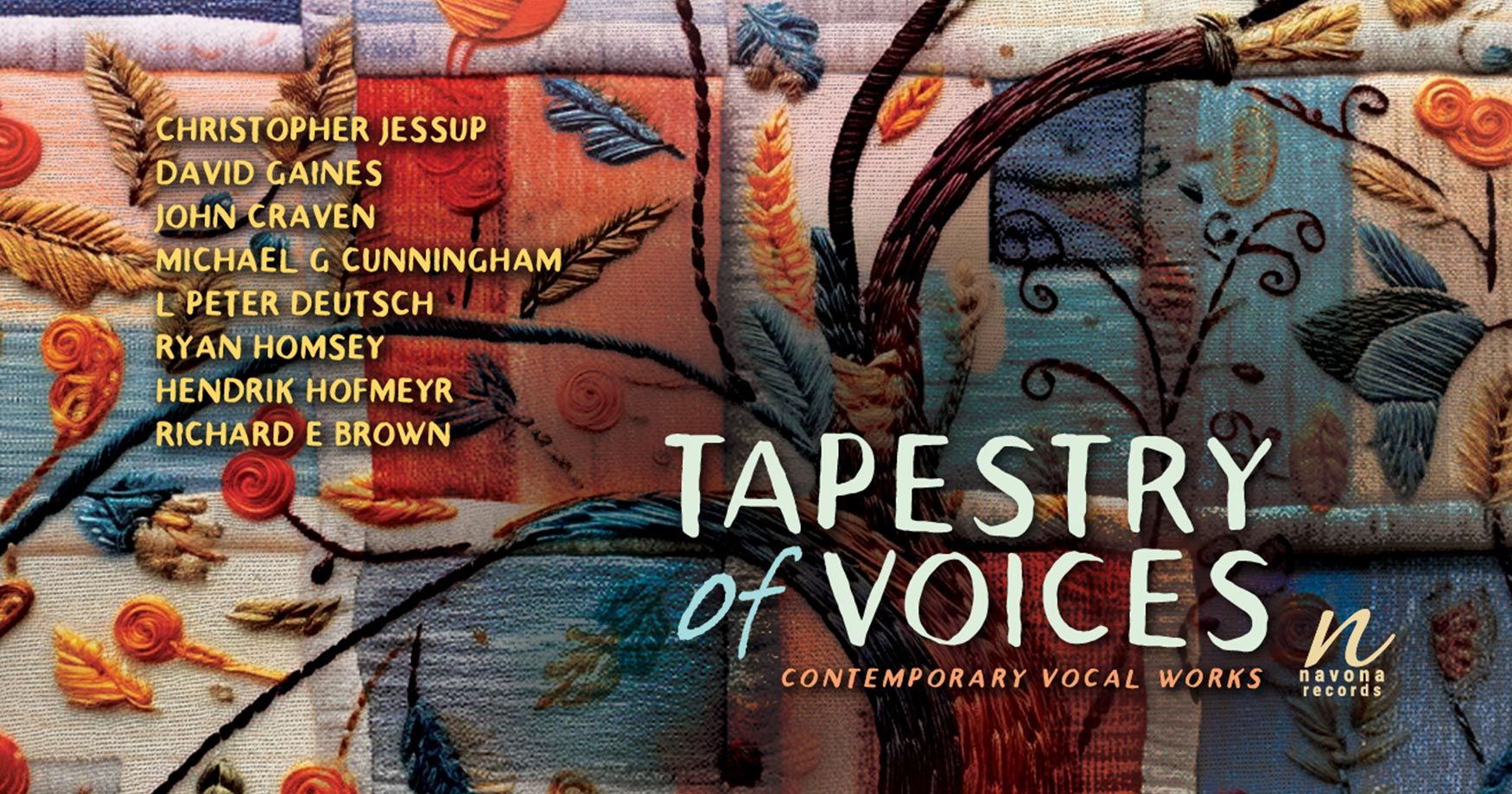
TAPESTRY OF VOICES from Navona Records showcases the versatility and elegance of the human voice woven with grand orchestral statements, colorful choral arrangements, and intimate settings with piano. Eight contemporary composers offer settings of poetry and stories from various cultures throughout human history, from Africa to Europe, North America, and beyond. Threading modern takes on Greek mythology, meditations on concepts of loss, mortality, and more, TAPESTRY OF VOICES is exactly as its title suggests — an intricate and artistic convergence of ideas that’s sure to entrance those who experience it.
PARMA Senior Content Writer Shane Jozitis recently connected with the composers of TAPESTRY OF VOICES to learn more about the inspirations, processes, and realizations behind their works. Read on for an exclusive deep dive into the creative minds of Christopher Jessup (CJ), John Craven (JC), Ryan Homsey (RH), and Hendrik Hofmeyer (HH).
If you were to adapt your vocal composition into another medium, what visual elements and storytelling techniques would you employ to enhance the narrative expressed through the music?
RH: I’m deeply inspired by the ways one art form can give rise to another. My love of poetry is fundamental to my process of composing vocal music. If Your Name were adapted into another medium, it would be a painting where the oils mix together to depict the atmospheric colors of the sky, and the impasto adds texture and depth to the landscape. Some other form of abstraction — something only a painter could do — would represent the hidden presence of a lost loved one.
JC: If given the chance I would try to create a short film or music video of the vocal composition My Life Closed Twice Before Its Close. But I don’t think that I would focus on specific narrative devices or storytelling techniques. I would instead focus on the singer and pianist as presenters of the music in a venue such as a concert stage and use various camera and editing techniques to engage the viewer/listener. Besides a recital hall or concert stage it could be filmed in a church. I just don’t want to give away the text and music with complicated visual elements or rapid cutting or editing; instead I prefer to have the music be at the forefront with emphasis given to the performance, be it live or filmed. I also believe that there could be a montage of aspects of nature and outdoor landscapes. Instead of fast edits there can be slow to medium slow dissolves with a slower pan/tilt of the camera. That said, I do believe that every vocal composition, if made into a film, video, or multimedia piece would have its unique set of requirements that would need to be addressed.
What aspects of vocal music inspire you as a composer? Can you share a particular vocal piece that you believe best encapsulates the range of human emotions and the power of music to express them?
RH: When poems are read aloud, they contain a world of shapes, sounds, and layers of meaning. It’s the process of building upon the poetic elements and dramatizing them even further by transforming them into music that inspires me. Each poem offers the potential for a new sonic world: from the tempo, key, and vocal range to the melody, texture, and form. I often feel as though I’m working in collaboration with the poet whether or not we have ever met.
I’m enraptured by Sanford Sylvan’s recording of St. Ita’s Vision from Samuel Barber’s Hermit Songs.The song begins with a dramatic recitative that coheres into a stirring melody, which evokes the rocking of a baby. The juxtaposition of piano and voice is marvelous as the two become increasingly expansive. The line “Nothing in this world is true / Save, O tiny, nursling, you” conjures the mysteries of Christianity and human existence, more broadly. Barber wrote this song for the soprano Leontyne Price with lyrics translated by the gay poet Chester Kallman. Sanford’s tender baritone embodies the female character as he sings the words of St. Ita, complicating gender roles by portraying the male singer as both strong and nurturing.
HH: The way in which music can explore the worlds behind words fascinates me. I believe with Mendelssohn that meaning in music is not too indefinite to put into words, but too definite. Words tend to be a rather generic shorthand for thought, emotion, and experience, and music is able to directly communicate everything that words can only evoke and describe. Bach’s Passions, the great German and French art songs, and the best operas of Monteverdi, Mozart, Verdi, Wagner, Puccini, and Britten all do this, and I would find it difficult to choose a single work that encapsulates it all. Perhaps Wolf’s Spanisches Liederbuch?
How does your background as a singer and/or instrumentalist inform your compositional output in choral music?
CJ: I sang in numerous choirs as a child and young adult, but I did not realize at the time how impactful and valuable that experience could be on me as a composer later on. I now consider choir to be my favorite medium to compose for, and I believe that singing is the purest form of music there is.
What are some of the most challenging aspects of composing vocal music, and how do you push the boundaries of the genre or experiment with new approaches?
JC: I think that structure and form are challenging aspects of composing vocal music in a classical music style. How the piece unfolds and how much word painting and harmonic effects should be employed are all details that need to be taken into consideration. Each poem will have its unique characteristics and musical qualities. I think that experimenting with structure and form can definitely push the boundaries of song form. There can be attempts to make a song fit into a theatrical or dance setting, or even be used with electronic instruments and computer music.
HH: For me, the biggest challenges in writing vocal music are to be faithful to the spirit and scansion of the text, to write idiomatically for the voice and for the instruments involved and, most importantly, to meld all these aspects into a single laser beam of expressive intensity. One of the most exciting new developments for me is the use of multimedia in the presenting of small-scale vocal works. An example would be my monodrama Shirt of flame for soprano, clarinet, and piano on poems by Sheila Cussons, which employs staging and multimedia to explore the space between opera and the song cycle.
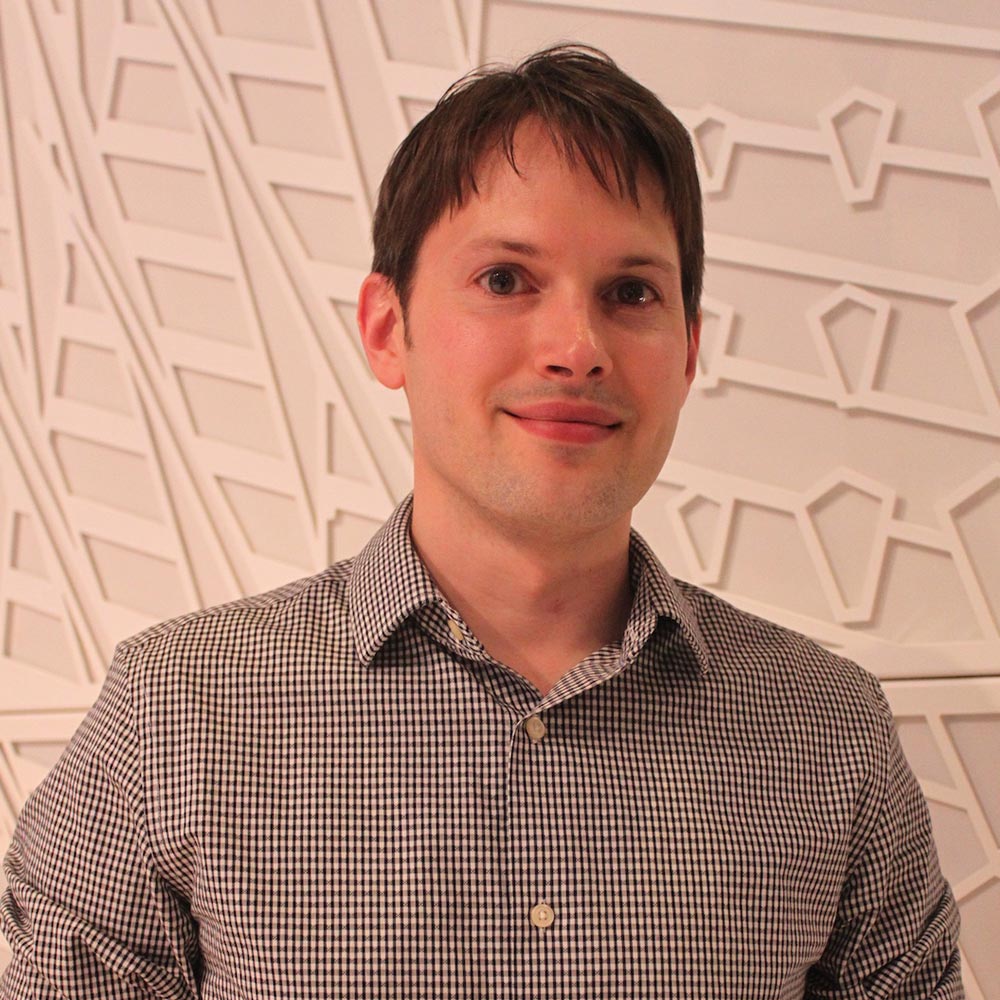
Ryan Homsey is a versatile, award-winning American composer, equally at home writing for instrumental and choral ensembles, theater, dance, and film. His background in classical, electroacoustic, and popular music draws inspiration from his history as a professional ballet dancer. Homsey’s works have been performed by JACK Quartet, PUBLIQuartet, Access Contemporary Music, ensemble mise-en, Duluth-Superior Symphony Orchestra’s Music to You String Quartet, Boston New Music Initiative, and the Orlando Contemporary Chamber Orchestra at such venues as the Taipei Cultural Center, the Museum of Natural History, the Metropolitan Museum of Art, HERE Arts, and National Sawdust.
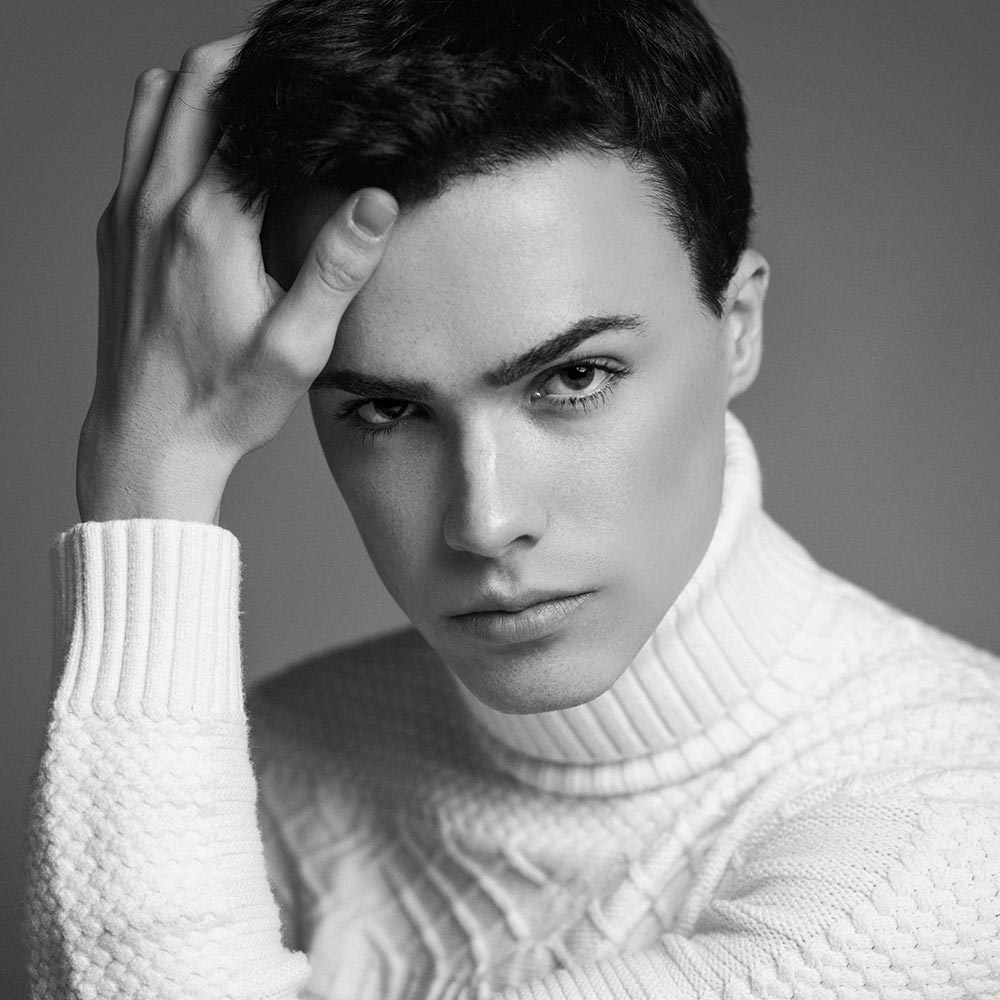
Multi award-winning composer and pianist Christopher Jessup is an artist of formidable prowess. Jessup has garnered acclaim for his “imaginative handling of atmosphere” [Fanfare] and his “high standard of technique” [New York Concert Review], cementing himself as one of the foremost composer-performers of his generation.
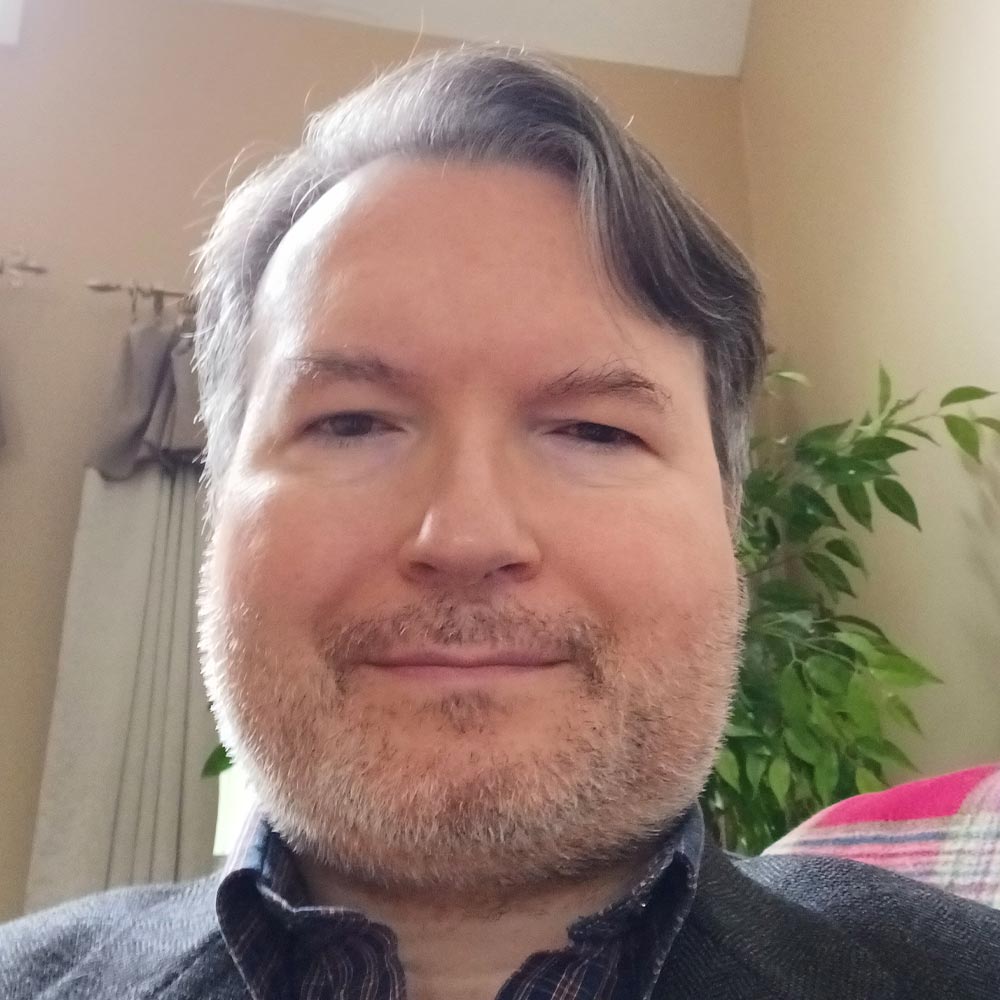
John J. Craven (b.1971) was enthusiastically drawn to listening to classical music, music theater, and popular music as a child. He studied piano and flute and began to compose at age 11. He was a winner in the Fourth International Aaron Copland Competition for Young Composers at age 12. He studied piano at the Peabody Conservatory of Music from 1989 to 1991. From 1992 to 1994 he received a B.A. in Communication Studies at the University of Iowa; in 1997 he completed a B.F.A. in music composition at SUNY Purchase. He returned to Peabody in 2009 to receive a M.M. in composition.
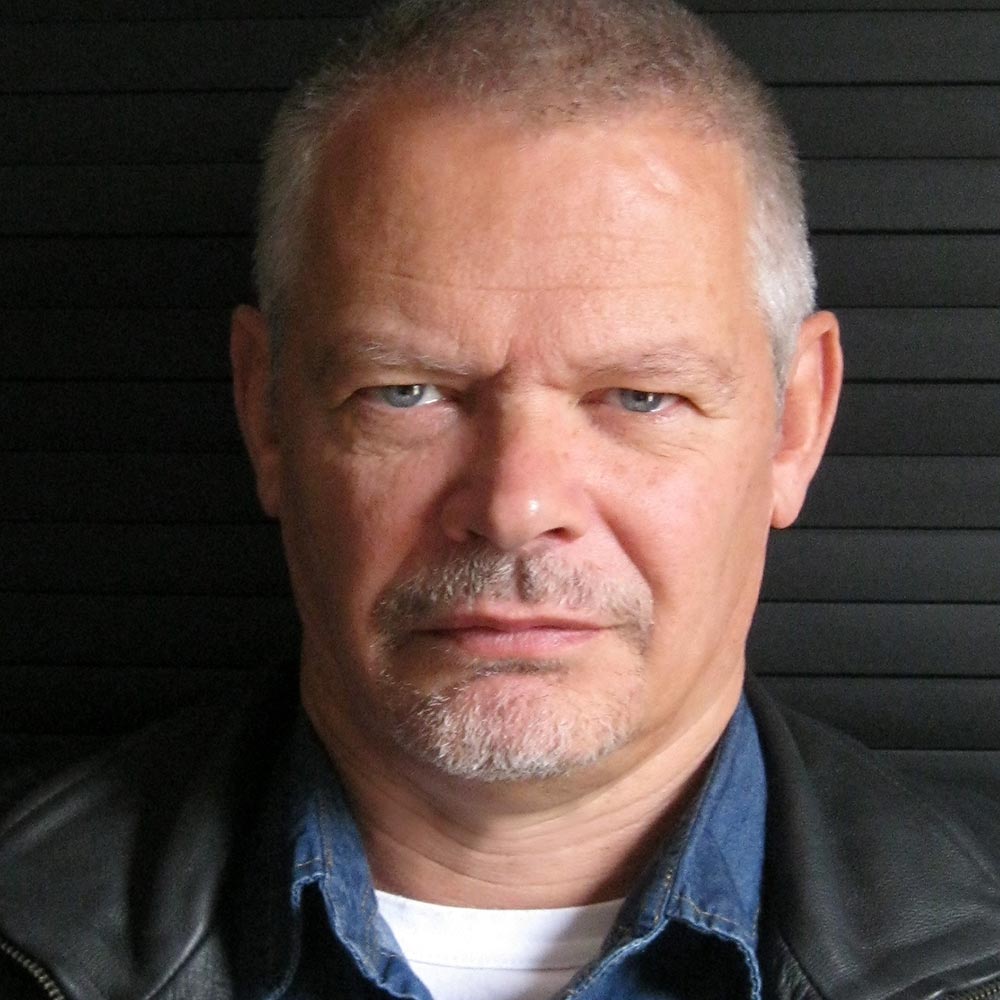
Hendrik Hofmeyr, who has been described as South Africa’s most performed composer of Classical music, was born in Cape Town in 1957. He achieved his first major success as a composer in 1988 with the performance at the State Theatre of The Fall of the House of Usher, which won the South African Opera Competition and the Nederburg Opera Prize. In the same year, Hofmeyr, who was furthering his studies in Italy during ten years of self-imposed political exile, obtained first prize in an international competition in Trent with music for a short film by Wim Wenders. In 1992 he was appointed lecturer at the University of Stellenbosch, and in 1997 won two further international competitions, the Queen Elisabeth Competition of Belgium (with Raptus for violin and orchestra) and the Dimitri Mitropoulos Competition in Athens (with Byzantium for high voice and orchestra).
